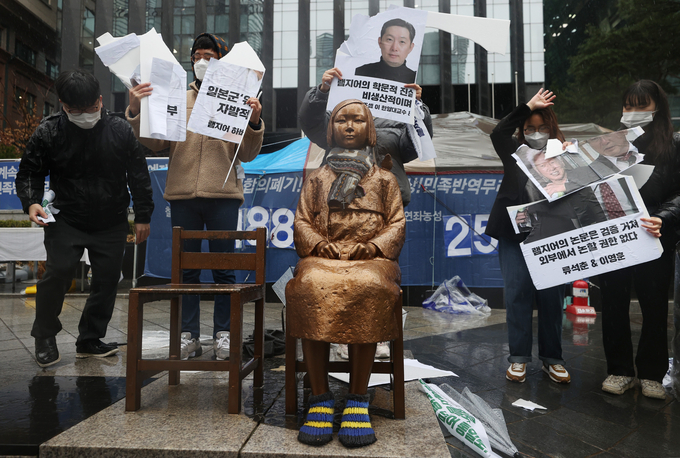
Harvard University Press recently made revisions to their textbook "Korean History: Discovery of Its Characteristics and Developments," in response to criticisms about the way it addressed certain aspects of Korean history. One of the major changes was the inclusion of the East Sea as a term to refer to the body of water between Korea and Japan, alongside the commonly used name, the Sea of Japan.
The use of the name "Sea of Japan" has long been a point of contention between Korea and Japan, as it reflects Japan's historical dominance in the region and ignores Korea's own history and perspective. The decision to include the East Sea in the textbook was hailed by many Koreans as a victory for their national identity and sovereignty.
Another significant revision to the textbook was the inclusion of more information about Japan's use of forced labor during its colonial occupation of Korea in the early 20th century. The previous version of the textbook had mentioned this briefly, but the revised edition includes more details about the extent of Japan's exploitation of Korean labor and the long-term impact it had on Korean society.
These revisions were welcomed by many scholars and activists in Korea, who have long argued that the history of Japanese colonialism and Korean resistance has been downplayed or ignored in mainstream narratives. They see the changes to the Harvard textbook as a step towards greater recognition of the Korean perspective and a more balanced understanding of the historical relationship between Korea and Japan.
However, the revisions were not without controversy. Some critics, both in Korea and abroad, accused Harvard of caving in to Korean nationalist sentiment and sacrificing academic rigor in the process. They argued that the use of the term East Sea was politically motivated and not supported by historical evidence, and that the emphasis on Japanese atrocities in the textbook was an attempt to demonize Japan and downplay Korea's own role in its history.

Despite these criticisms, the revised edition of "Korean History: Discovery of Its Characteristics and Developments" has been well received by many readers and scholars. It represents an important contribution to the ongoing dialogue about Korean history and identity, and highlights the complexity and diversity of the Korean experience.
The inclusion of the East Sea as a term to refer to the body of water between Korea and Japan was a significant change to the textbook, as it reflects a broader effort by Koreans to reclaim their national identity and push back against historical narratives that have been dominated by Japan and other external powers. The Korean government has been actively promoting the use of the term "East Sea" in official communications and maps, and has been working to raise awareness of the issue on the international stage.
The use of the name "Sea of Japan" has long been a source of tension between Korea and Japan, as it represents Japan's historical dominance in the region and ignores Korea's own history and perspective. Many Koreans see the name as a symbol of Japan's imperialist past and a reminder of the country's colonial subjugation of Korea. In recent years, there has been a growing movement among Koreans to challenge the use of the term and promote the use of alternative names, such as the East Sea or the Sea of Korea.
The revised edition of the Harvard textbook also includes more information about Japan's use of forced labor during its colonial occupation of Korea in the early 20th century. The previous version of the textbook had mentioned this briefly, but the new edition includes more details about the extent of Japan's exploitation of Korean labor and the long-term impact it had on Korean society. The revised edition also includes more information about the role of Korean resistance and activism during the colonial period, highlighting the agency and resilience of Koreans in the face of Japanese oppression.
The changes to the textbook have been welcomed by many Koreans, who see them as a positive step towards greater recognition of their national identity and historical experience. However, the revisions have also been criticized by some, who argue that they reflect a narrow and politically motivated perspective that downplays the complexity and diversity of Korean history. Some critics have also accused Harvard of caving in to Korean nationalist sentiment and sacrificing academic rigor in the process.
Despite these criticisms, the revised edition of the textbook represents an important contribution to the ongoing dialogue about Korean history and identity. It highlights the ways in which historical narratives are shaped by political and cultural forces, and the importance of promoting diverse and inclusive perspectives in the study of history.








